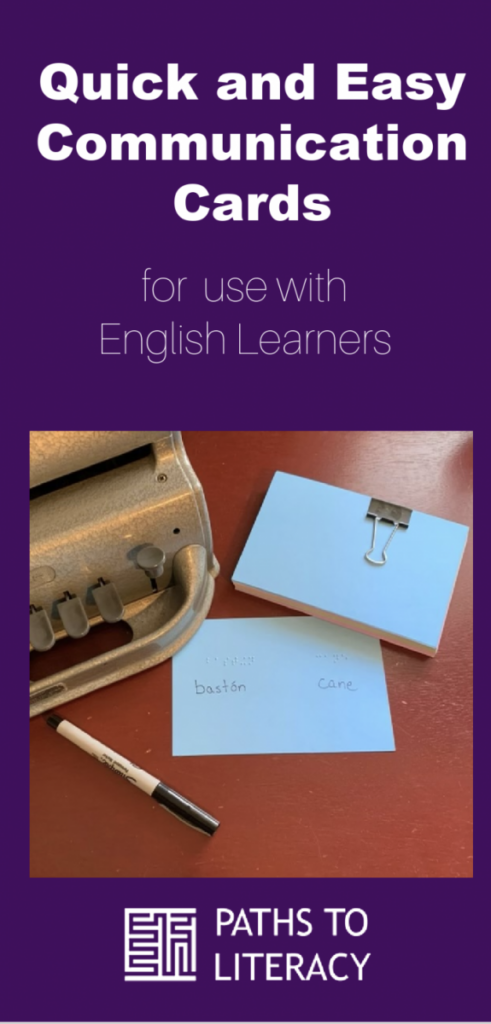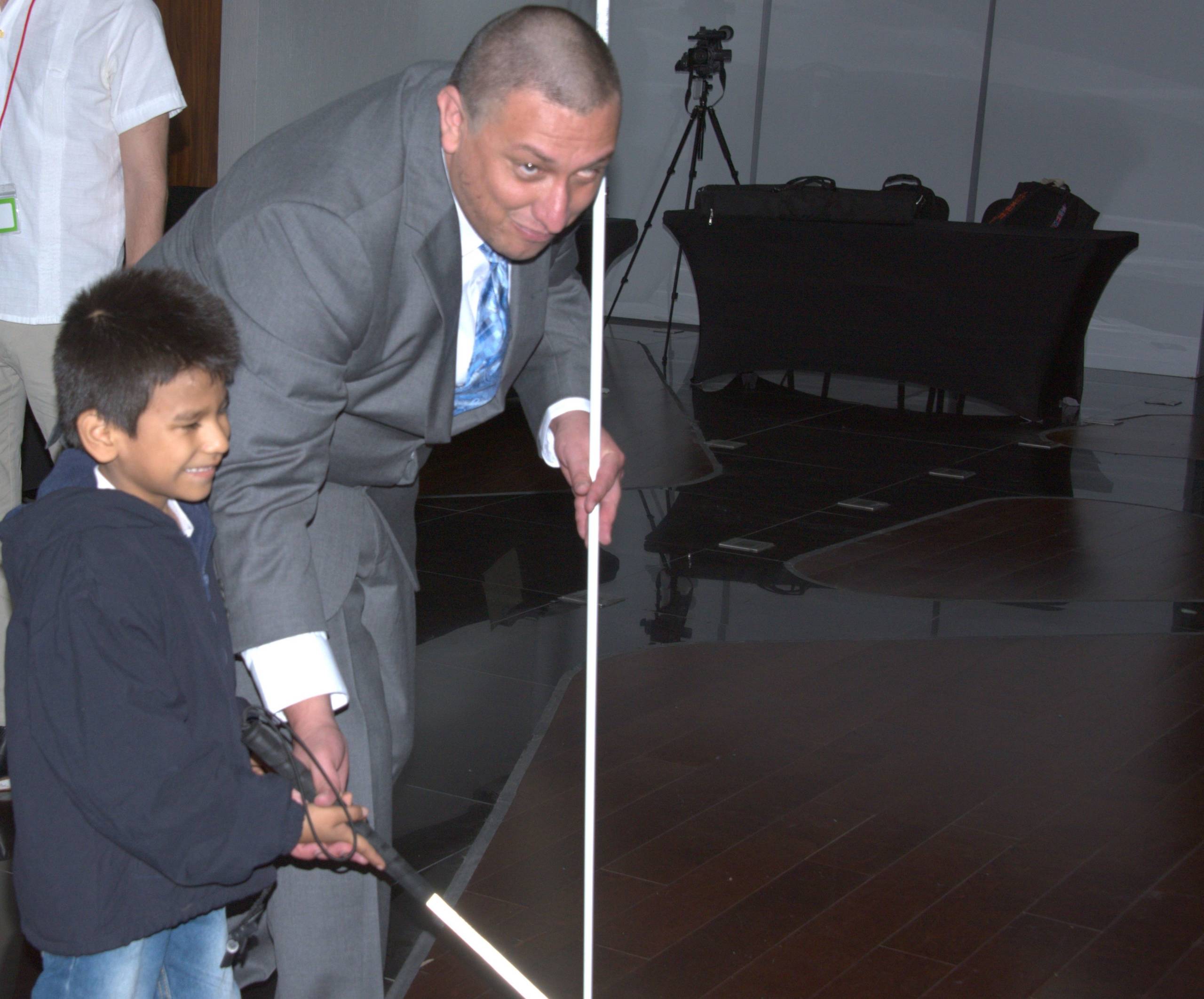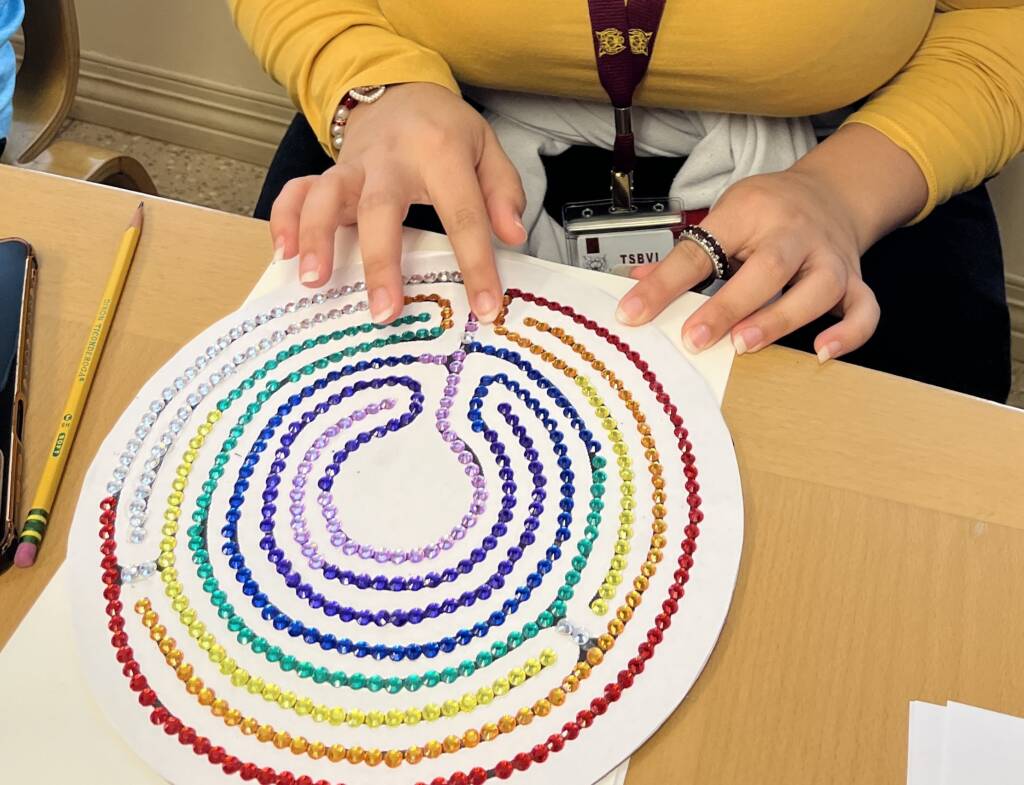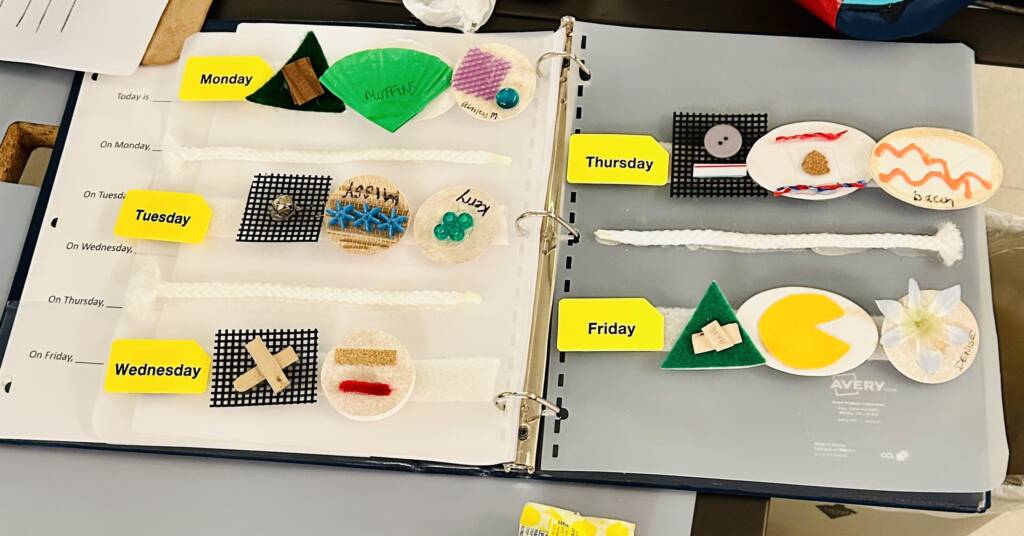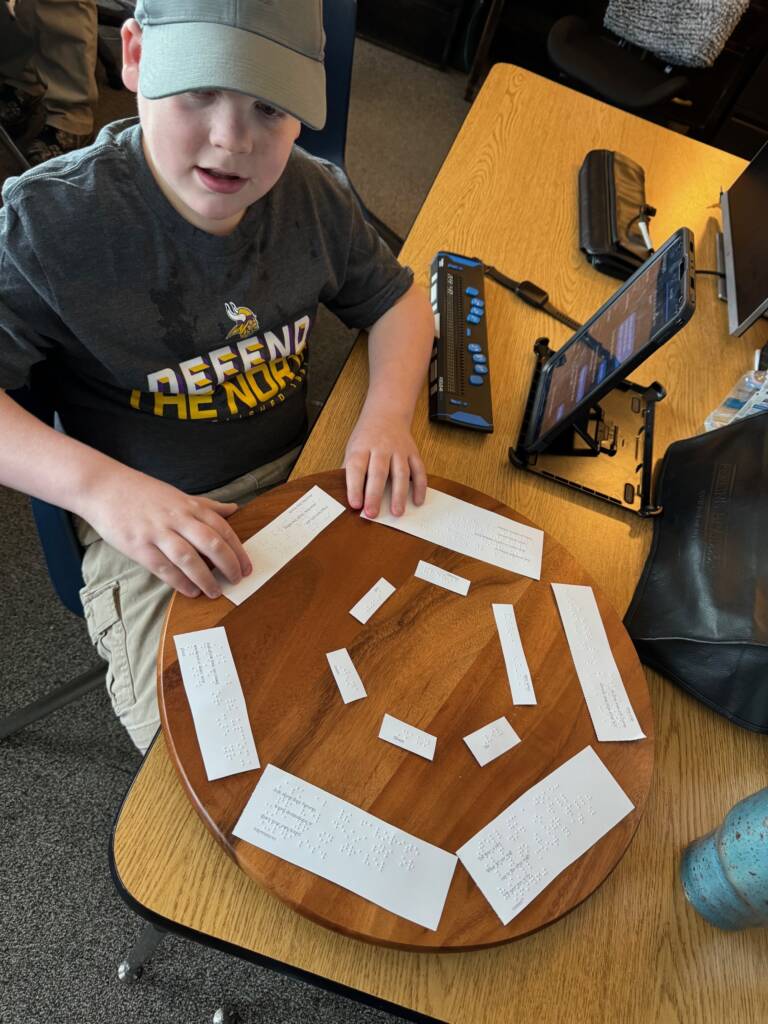A simple tool that can help you while working with blind students who are also learning English or are deaf-blind is using communication cards. I have used these cards when working with Spanish speaking students learning English and deaf-blind students during cane travel lessons. They are easy to create and can include more detail or explanation depending upon the student’s language needs.
Making Communication Cards
You can make these communication cards out of index cards and may choose to punch a hole in the top corner to tie them all together like a flipbook if desired. The cards should include the English word and the word in the student’s first language in their preferred reading medium.
For example, one of my index cards simply had the word “cane” written in English braille and the word “bastón” written in Spanish braille. It is important to have a native speaker check the translation to make certain it is accurate.
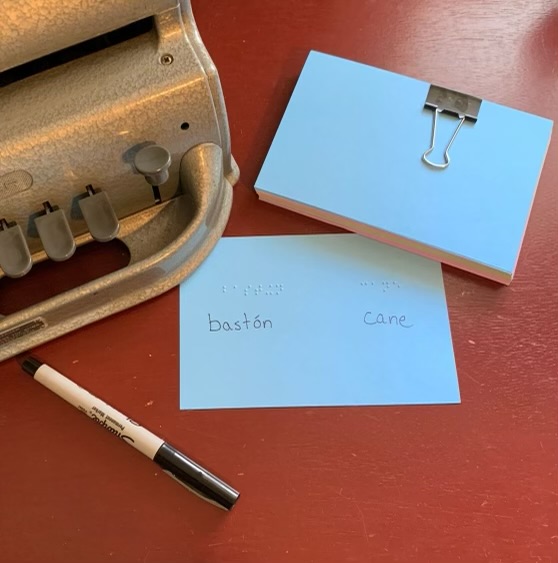
These cards can be expanded to include different media, such as large print, pictures of the item, or an image of the American Sign Language sign. It is helpful to prepare several communication cards that relate to a particular lesson.
Orientation and Mobility and Communication Cards
If I am working with a student on learning how to shoreline with the cane, my cards may include words like “cane,” “shoreline,” “follow,” “door,” “grass,” and “sidewalk.” You can give these to the student to review before and after the lesson. You may also use them along with the interpreter or intervener so you are able to communicate more directly with the student. You may begin to learn some key words in the student’s language as you prepare and review the cards.
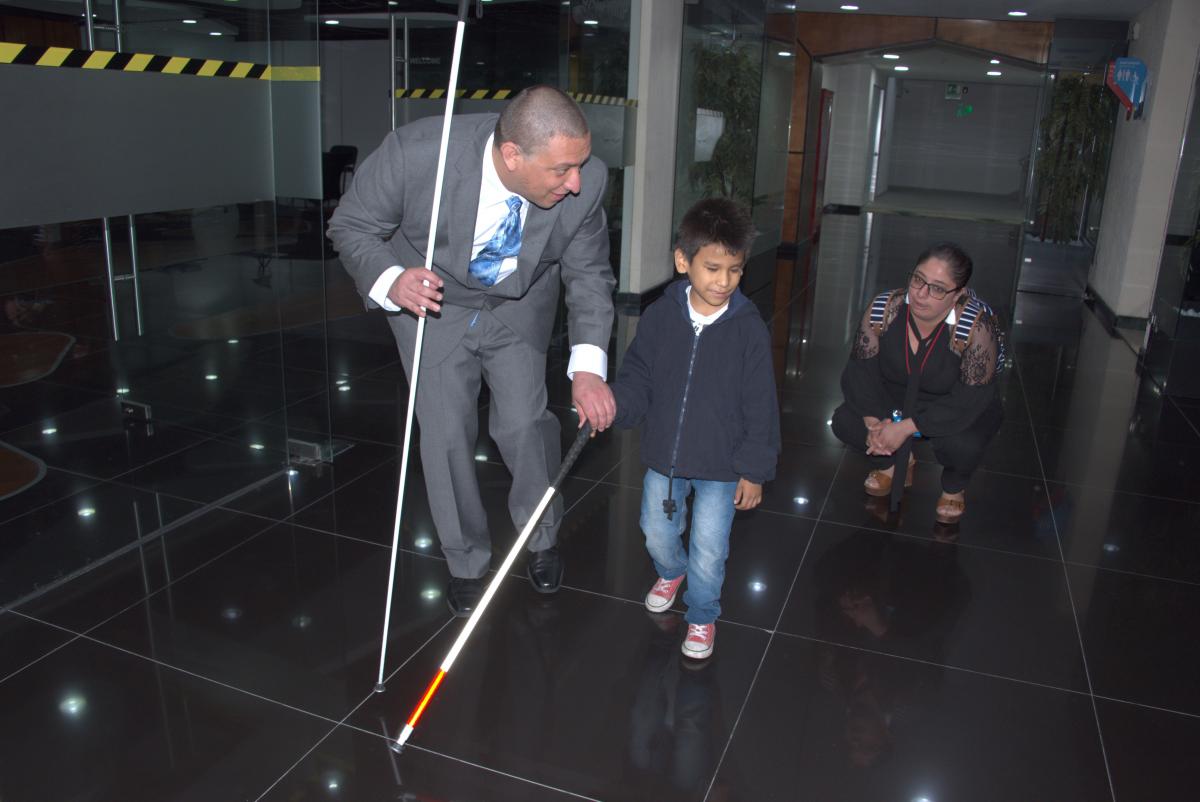
These communication cards help the student build their English vocabulary while learning important blindness skills and concepts. They also help you as the teacher learn some key phrases in the student’s first language and allow you to communicate more directly with the student while working with an interpreter or intervener.
